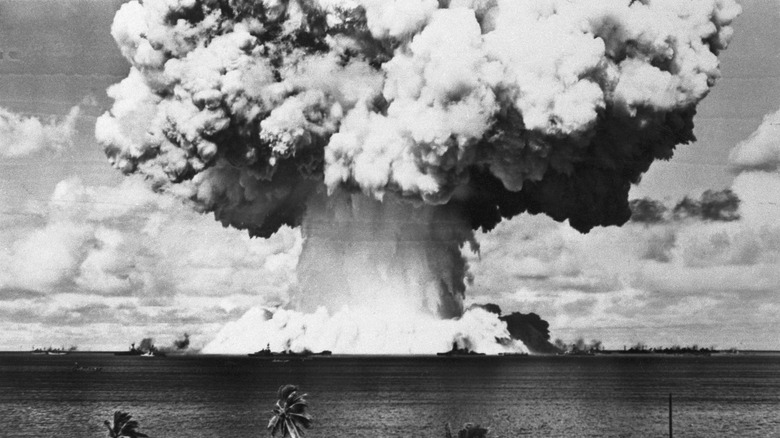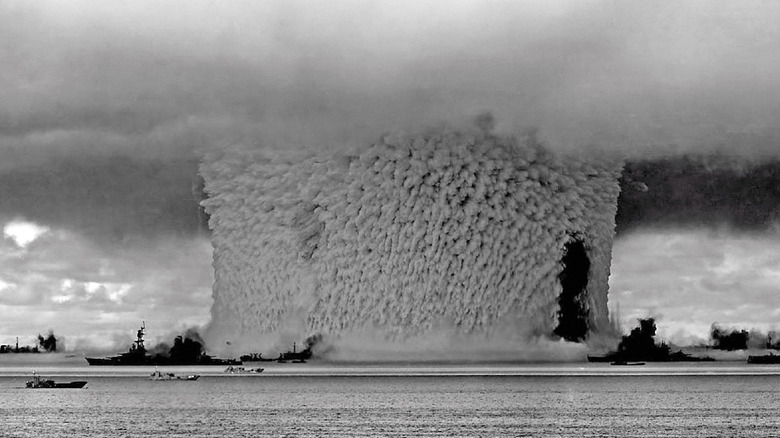Why Did The US Navy Drop A Nuclear Bomb On Its Own Ships?
Finding answers to vitally important questions sometimes requires extreme, out-of-the-box thinking. During wartime, the stakes are often exponentially elevated and require a level of real-world practicality that would otherwise be unheard of, such was the case with Operation Crossroads. During World War II, the United States dropped two nuclear bombs — "Little Boy" on Hiroshima with a yield of about 13 kilotons, and "Fat Man" on Nagasaki with a yield of 21 kilotons — and they don't even make the list of the ten most powerful nuclear bombs ever detonated. Still, questions lingered over exactly what impact these devastating weapons would have on naval vessels in the water.
After receiving approval from the president, the joint chiefs of staff moved forward with a plan that was, in part, put together by the Army engineers at the Manhattan Project, the very group that had split the atom and built America's first atomic bombs, one of six scientific achievements once thought impossible. The goal was to see exactly what nuclear explosions would do to warships and the associated equipment and organic matter aboard them.
The results would then be used to improve "ship design, tactical formations at sea, and anchoring distances in port," according to the Navy. The original series of tests called for the implosion of three nuclear bombs — designated Able, Baker, and Charlie — near 95 vessels that included battleships, aircraft carriers, cruisers, destroyers, submarines, a floating drydock, three different Axis ships, and other types of support ships.
Radioactive waste did far more damage than the explosions
Operation Crossroads took place at Bikini Atoll, located in the Marshall Islands in the central Pacific because it had a lagoon surrounded by over 200 square miles of reef that provided adequate protection for both the fleet of 95 target ships and the additional 150 support vessels needed to carry the entourage of scientists, military officers, congressmen, and 131 reporters from newspapers, magazines, and radio. The 162 natives were relocated to the island of Rongerik, located 125 miles east of Bikini. Between 1947 and 1958, it would be used for another 23 nuclear tests.
The Navy placed live animals — roughly 5,000 rats, 204 goats, 60 guinea pigs, 200 pigs, 200 mice, and various insects — aboard the target ships to test organic matter. A Boeing B-29 Superfortress (one of the most legendary planes of WW2) dropped the Able, a plutonium bomb with a yield of 23 kilotons on July 1, 1946. It exploded 520 feet above the target fleet. The explosion only sank five ships while others were riddled with topside damage from the blast.
On July 25, Baker — the second 23-kiloton bomb — was tethered to a landing craft 90 feet underwater. Its explosion sank a total of eight ships, including the aircraft carrier CV-3 Saratoga while irradiated water washed over 74 others, heavily contaminating them. Only 12 were deemed safe, and the rest had to be scuttled due to radioactivity. The third test (Charlie) was summarily canceled.

